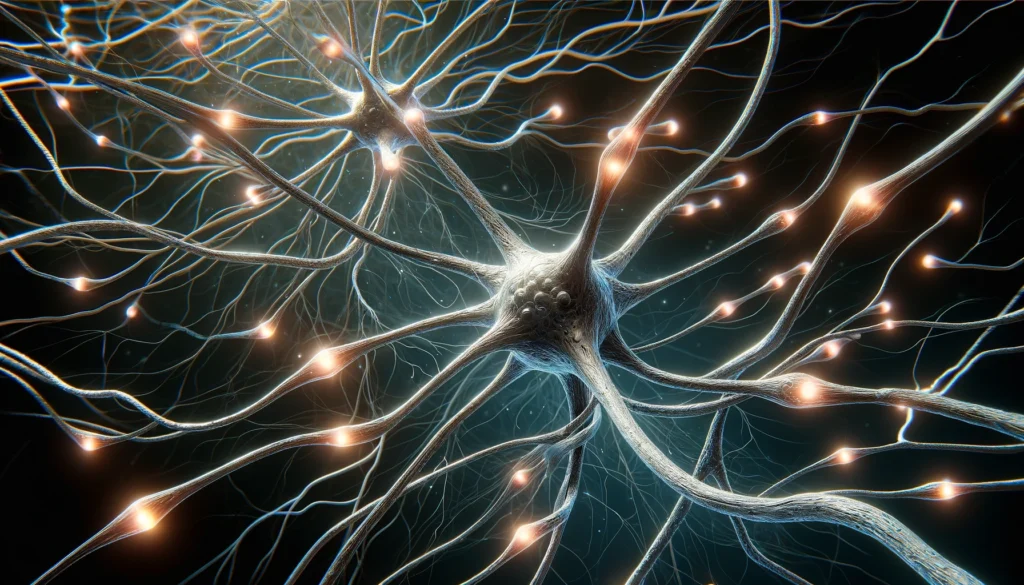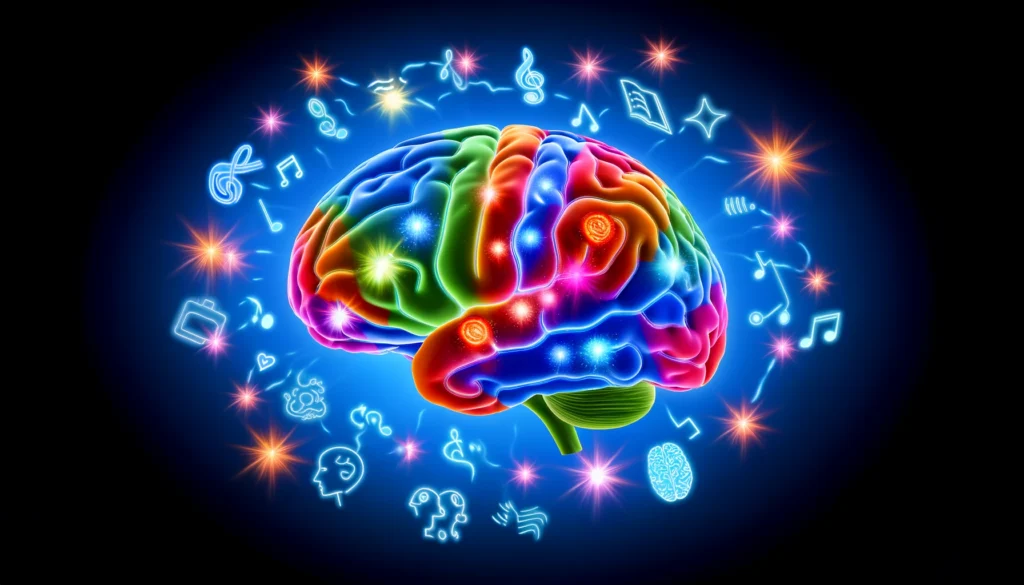Neuroplasticity, a term that has captivated the field of neuroscience, refers to the brain’s remarkable ability to reorganize and adapt its structure and function throughout an individual’s life. This adaptive capacity allows the brain to form new neural connections in response to learning, experience, and even injury. The concept of neuroplasticity challenges the long-held belief that the brain’s neural pathways are fixed and unchangeable post-childhood, offering a more dynamic and optimistic view of the brain’s potential.
Historically, the idea of a malleable brain was met with skepticism. Early neuroscientists believed that once the critical periods of childhood development passed, the brain’s architecture became rigid, limiting its ability to transform and repair. However, groundbreaking research over the past few decades has revolutionized our understanding, demonstrating that the brain remains plastic and capable of change well into adulthood. This shift in perspective has profound implications for everything from educational strategies to rehabilitation approaches for brain injuries.
Neuroplasticity occurs at multiple levels, from cellular changes in response to learning to large-scale cortical remapping after significant events like a stroke. The process involves strengthening or weakening the connections between neurons, known as synapses, which is fundamental to learning new skills, storing memories, and recovering lost functions. For instance, when people learn a new language or master a musical instrument, their brains physically change, creating and reinforcing pathways that support these new skills.
Understanding neuroplasticity not only fascinates those curious about the human brain’s capabilities but also provides hope and strategies for enhancing cognitive function and overcoming neurological challenges. As we delve deeper into the mechanisms of neuroplasticity, we begin to uncover the incredible adaptability of the human brain, revealing its potential to heal, evolve, and enhance our lives in ways previously unimagined.
Mechanisms of Neuroplasticity
At the core of neuroplasticity are the mechanisms that enable the brain to rewire itself in response to diverse stimuli and demands. This adaptability is facilitated by changes at the synaptic level, where neurons connect and communicate. Synaptogenesis, the formation of new synaptic connections, plays a critical role in this process, allowing the brain to forge new pathways that reflect our experiences and learning.
Neurons in the brain communicate via synapses, and their connections are not static but highly dynamic, influenced by activity and experience. When we learn something new or repeatedly practice a skill, the synaptic connections between neurons in the relevant brain regions become stronger and more efficient, a phenomenon known as synaptic strengthening. This is often described by the adage “neurons that fire together, wire together,” highlighting the idea that frequent simultaneous activation of neurons strengthens their connections.

Conversely, synaptic pruning is another vital aspect of neuroplasticity, where weaker or seldom-used synaptic connections are eliminated. This process is akin to pruning a tree; by removing less active connections, the brain can allocate resources more efficiently, enhancing the function of stronger synaptic pathways. Pruning is especially prevalent during early development but continues throughout life, ensuring the brain’s architecture remains optimized for current needs and functions.
Moreover, neuroplasticity is not just about the number or strength of synaptic connections but also involves changes in the internal structure of neurons. This includes modifications in dendritic branches and axonal growth, allowing neurons to reach out to new regions and form connections, further facilitating neural network reorganization.
Understanding these mechanisms underscores the brain’s capacity for change, driven by our actions, environment, and internal processes. It reveals the intricate and dynamic nature of the brain’s architecture, highlighting its ability to adapt, learn, and recover, underscoring the profound impact of our daily activities and experiences on our brain’s structure and function.
Neuroplasticity in Action: Learning and Memory
- The Brain’s Learning Process
Neuroplasticity is the engine behind our capacity to learn and memorize, manifesting through complex neural adjustments as we absorb new information or skills. When we embark on learning, the involved brain regions become a hive of activity, forging new synaptic bonds and reinforcing existing ones. This synaptic evolution is crucial for embedding new knowledge and retaining it in our memory.

- Synaptic Strength and Memory Formation
The learning journey initiates synaptic strengthening, where repeated neural activity bolsters the connection between neurons, enhancing their communication. This process, pivotal for memory consolidation, is exemplified in activities like mastering a musical instrument or assimilating a new language, where practice literally perfects the brain’s neural circuitry, facilitating long-term memory storage.
Through these mechanisms, neuroplasticity underpins every learning experience, showcasing the brain’s dynamic ability to adapt its structure in response to educational and environmental stimuli.
In essence, neuroplasticity is not just a feature of the brain; it is a fundamental characteristic that underpins learning and memory. It illustrates how our interactions with the world around us directly influence our brain’s structure and function, shaping who we are and how we experience life.
Healing and Recovery: Neuroplasticity’s Role in Brain Injury and Rehabilitation
- Neuroplasticity in Brain Injury Recovery
Neuroplasticity plays a crucial role in the brain’s ability to recover from injury. Following trauma or neurological disorders, the brain can often reroute functions from damaged areas to healthy ones. This reorganization is a testament to the brain’s adaptability, where it compensates for lost functions by forming new neural pathways, a process central to the recovery and rehabilitation of brain injury patients.

- Rehabilitation and Neuroplasticity
In the context of rehabilitation, neuroplasticity is the foundation for recovery strategies. Therapeutic interventions, such as physical therapy, speech therapy, and cognitive exercises, leverage the brain’s plastic nature to enhance recovery. These activities promote the creation of new connections and the strengthening of existing ones, facilitating improvements in cognitive and physical functions.
The journey of healing and recovery through neuroplasticity underscores the brain’s remarkable capacity to adapt and overcome challenges. It highlights the potential for significant functional recovery, even in the face of substantial neurological damage, offering hope and a path forward for patients and their families.
Enhancing Neuroplasticity: Tips and Techniques
Enhancing neuroplasticity means actively engaging in activities that stimulate the brain’s ability to form new neural connections, thereby improving cognitive function and adaptability. Research suggests that certain practices and lifestyle choices can significantly boost our brain’s plasticity, leading to better learning capabilities, and memory, and even aiding in recovery from neurological conditions.
- Fostering a Brain-Healthy Lifestyle
To enhance neuroplasticity, adopting a lifestyle that supports brain health is essential. Regular physical exercise, such as aerobic activities, can increase blood flow to the brain, supporting the formation of new neural connections. A balanced diet rich in omega-3 fatty acids, antioxidants, and vitamins also plays a critical role in nurturing brain health and promoting plasticity.
- Cognitive Engagement and Learning
Engaging in continuous learning and cognitive challenges stimulates the brain and encourages neuroplasticity. Activities like learning a new language, playing musical instruments, or engaging in complex problem-solving tasks can drive the brain to form new connections, enhancing its plasticity and cognitive reserve.

- Mindfulness and Mental Well-being
Practices such as mindfulness meditation, yoga, and tai chi can positively impact the brain’s structure and function. These practices not only reduce stress and anxiety but also promote attention, concentration, and emotional regulation, all of which are beneficial for brain plasticity.
- Social Interactions and Neuroplasticity
Maintaining strong social connections and engaging in meaningful social activities can also enhance neuroplasticity. Social interactions stimulate the brain, fostering emotional health and cognitive function, which are crucial for a plastic and resilient brain.
By incorporating these strategies into daily life, individuals can promote their brain’s neuroplasticity, leading to improved cognitive function, better mental health, and a greater ability to adapt to new challenges and experiences.
Embracing the Power of Neuroplasticity
In conclusion, the concept of neuroplasticity revolutionizes our understanding of the brain’s potential to adapt, learn, and recover. It is a testament to the brain’s remarkable ability to reorganize itself in response to various stimuli, experiences, and even injuries. This dynamic nature of the brain is not just a scientific curiosity but a beacon of hope for those affected by neurological conditions, offering new avenues for rehabilitation and recovery.
The exploration of neuroplasticity also empowers us with the knowledge that our actions, lifestyles, and environments can significantly influence our brain’s structure and functionality. By engaging in activities that promote brain health and cognitive function, we can potentially enhance our neural plasticity, leading to improved memory, learning, and overall mental well-being.
Moreover, the ongoing research in neuroplasticity promises to unlock further secrets of the brain, paving the way for innovative treatments and therapies that leverage the brain’s innate ability to heal and reshape itself. As we continue to delve into the complexities of the brain and its plastic nature, we are bound to discover more about this incredible organ’s capabilities, ultimately enhancing our quality of life and unlocking the full potential of the human mind.
In embracing the power of neuroplasticity, we open ourselves to a world of possibilities where brain health is central to our overall well-being. This journey into the heart of the brain’s adaptive capabilities not only enlightens us about its intricate workings but also inspires us to nurture and challenge our minds, ensuring a vibrant and resilient brain throughout our lives.
Author’s Note
Thank you for taking the time to explore the fascinating world of neuroplasticity with me. This journey into the brain’s adaptability and resilience is not just an academic pursuit but a personal one that impacts how we view learning, recovery, and overall mental wellness. I hope this blog inspires you to think about the brain’s potential and the role each of us can play in nurturing our cognitive health.
G.C., Ecosociosphere contributor.
References and Further Reading
- “The Brain That Changes Itself” by Norman Doidge – This book offers a comprehensive look into the power of neuroplasticity and real-life examples of brain adaptation.
- “Soft-Wired: How the New Science of Brain Plasticity Can Change Your Life” by Dr. Michael Merzenich – Dr. Merzenich, a pioneer in neuroplasticity research, provides insights into how we can harness our brain’s plasticity.
- “Neuroplasticity: The Regional Greenhouse Gas Initiative and a New Model of Emissions Trading” by Moheb Costandi – This book delves into the latest research and discoveries in the field of neuroplasticity, highlighting its implications for health and disease.





Comments
Thank you for your sharing. I am worried that I lack creative ideas. It is your article that makes me full of hope. Thank you. But, I have a question, can you help me? https://www.binance.info/en-IN/register?ref=UM6SMJM3
Your point of view caught my eye and was very interesting. Thanks. I have a question for you. https://accounts.binance.com/pt-BR/register-person?ref=YY80CKRN